DEFINITION OF TERMS
- KEYSTONE means they are listed by National Wildlife Federation as core plants for a wildlife garden in my ecoregion (Ecoregion 8).
- NOT QUITE NATIVE means they are slightly out of range but adjacent to NYS as determined by GoBotany and NY Flora Atlas.
- Otherwise the plant is a NY-native or native to the area noted.
New Jersey tea (Ceanothus americanus)
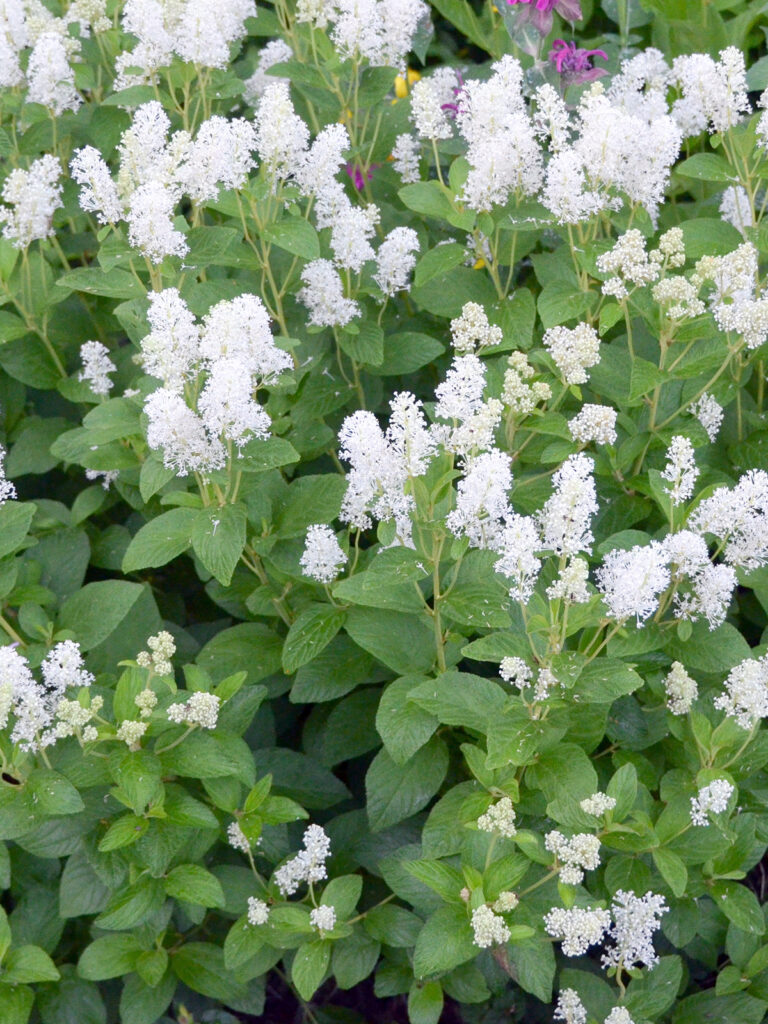
This is a charming little shrub, famous for being a substitute for England’s tea back in the colonial era. We haven’t tried this substitution since we no longer have a grudge against England, but we enjoy the pretty flowers.
We planted these on the mound created by excavating the pond, so the soil isn’t very good. It’s amazing that they survived.
For the first fifteen years, I thought it must be a difficult plant to grow. Every year, it seemed to be mostly dead. Every year I cut off all the dead parts. Every year I gave it another chance since it always looked like at least part of it was still alive. And every year it managed to grow back.
THEN… I read more carefully (in 2021) the Lady Bird Johnson Wildflower Center’s description: “The base is woody, while the upper portion of the plant is made up of herbaceous, spreading branches.” So all those “dead” branches weren’t the woody part of the plant, but the herbaceous parts that die in the winter. It wasn’t struggling at all.
Now that I understand its growth pattern, I can stop wondering if it’s dead each spring!
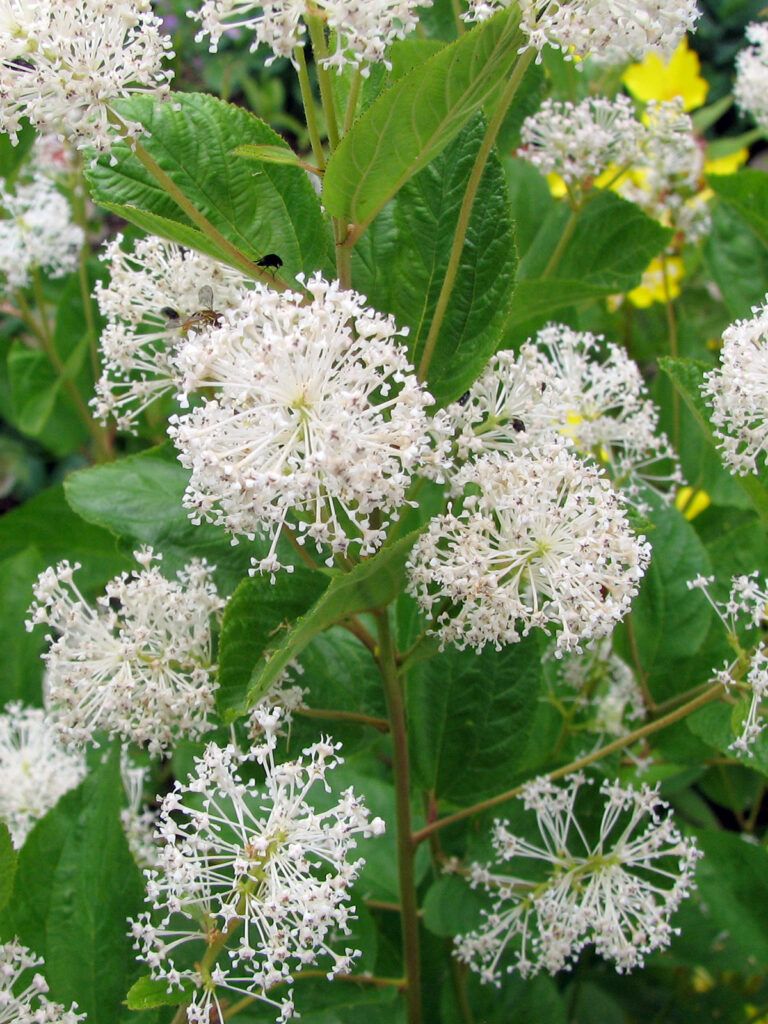
They have beautiful snowflake-like flowers. On a sunny day, we see clouds of tiny insects getting nectar.
It also has intriguing seed pods that are themselves quite ornamental, making the shrub appear to be fully in bloom first with pale yellow flowers, then pink. The empty brown seed pods are attractive, too.
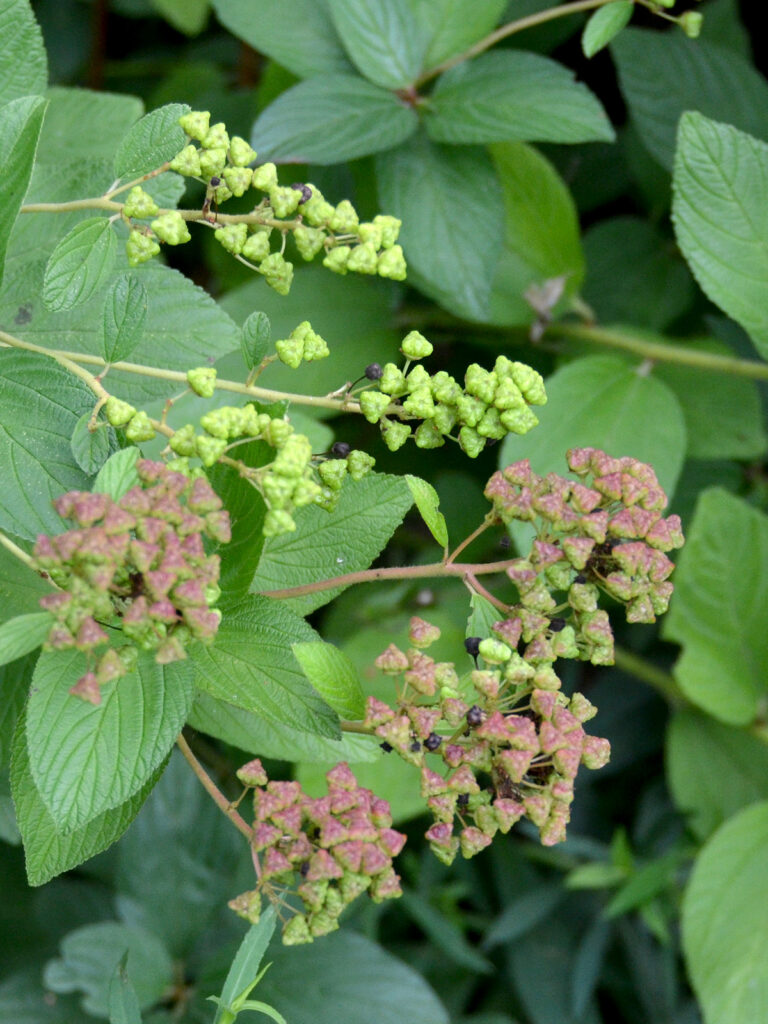
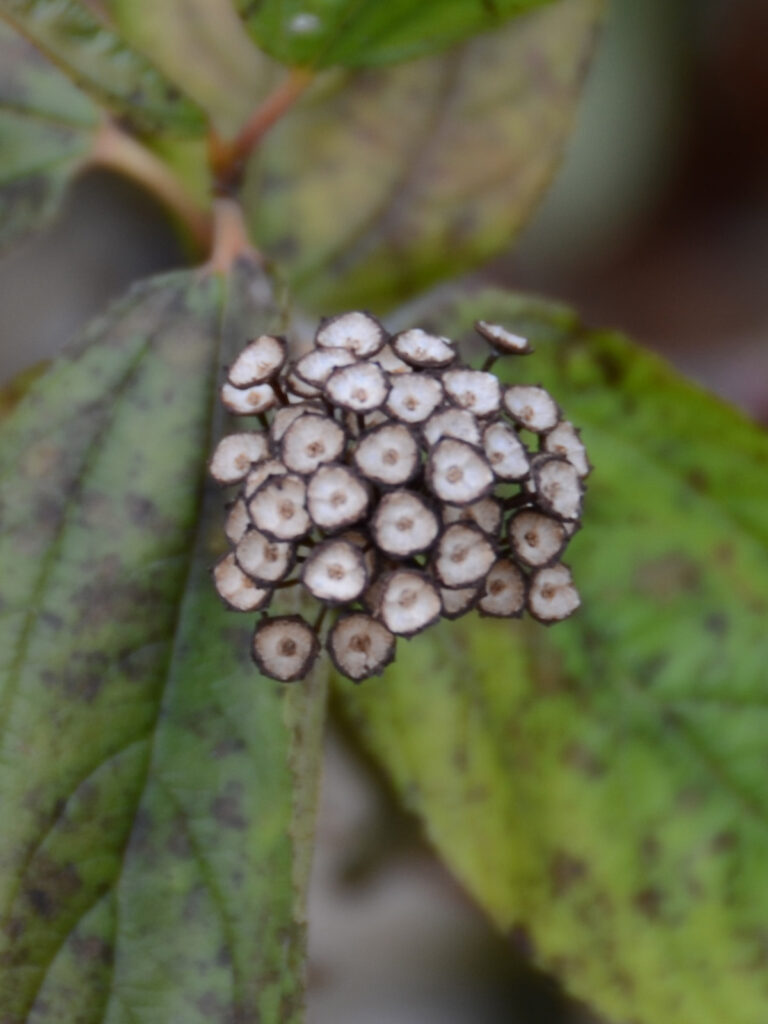
Wildlife: Nectar for butterflies
Larval host: Spring azure, mottled duskywing, summer azure butterflies
** SPECIAL VALUE TO NATIVE BEES **
** SUPPORTS CONSERVATION BIOLOGICAL CONTROL **
- Learn more:
- Wildflower Center: New Jersey tea
Buttonbush (Cephalanthus occidentalis)
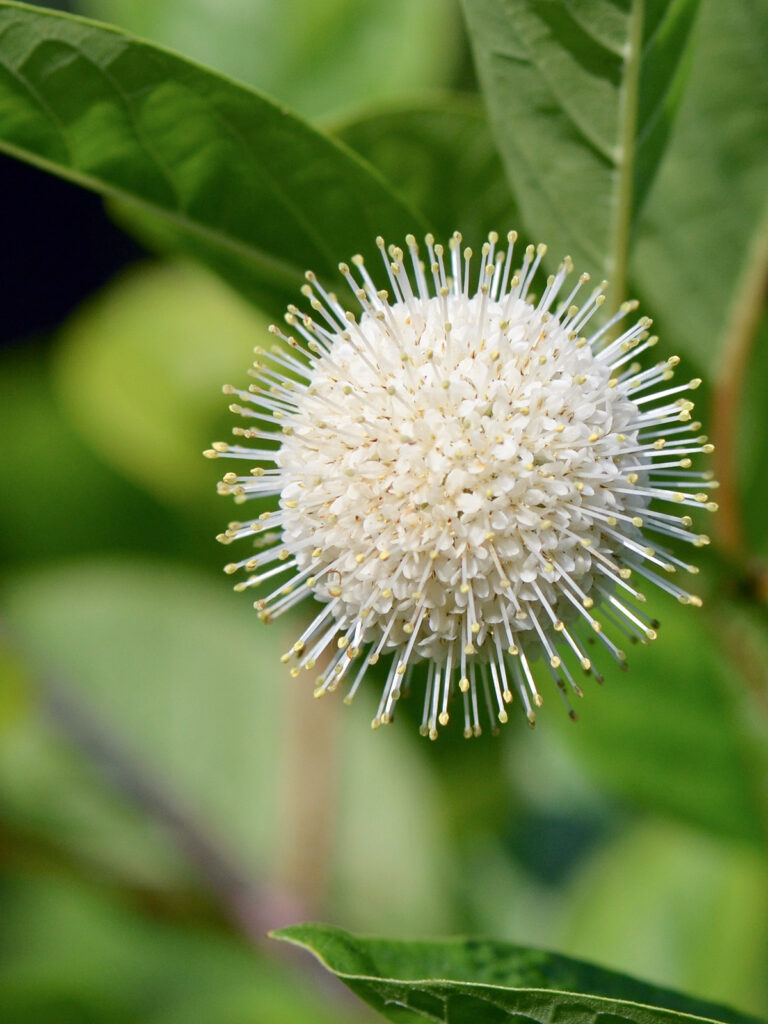
A perfectly spherical flower! This wetland shrub is known to be a prime nectar source. We bought this as a seedling, and it has been growing, though slowly.
We planted it at the end of the downspout gutter so it would have as much moisture as we could give it, but it’s not really moist soil. but it seems to be doing okay.
The ’10-’11 winter was very hard on shrubs, but especially hard on this one. Being still quite small, its branches were nailed to the ground by snow and ice throughout the winter and the main trunk split. It continued to grow the following year, somewhat the worse for wear.
Now, many years later, it seems to have finally come into its own, and we had a wonderful display of these intriguing flowers, which, since 2020, now seem to look like the coronavirus!
Wildlife: Nectar for butterflies, bees, insects; fruit for birds
Larval host: Hydrangea sphinx
Deer resistance: Moderate
** SPECIAL VALUE TO NATIVE BEES **
** SPECIAL VALUE TO BUMBLE BEES **
- Learn more:
- Wildflower Center: Buttonbush
Summersweet (Clethra alnifolia ‘Paniculata’)
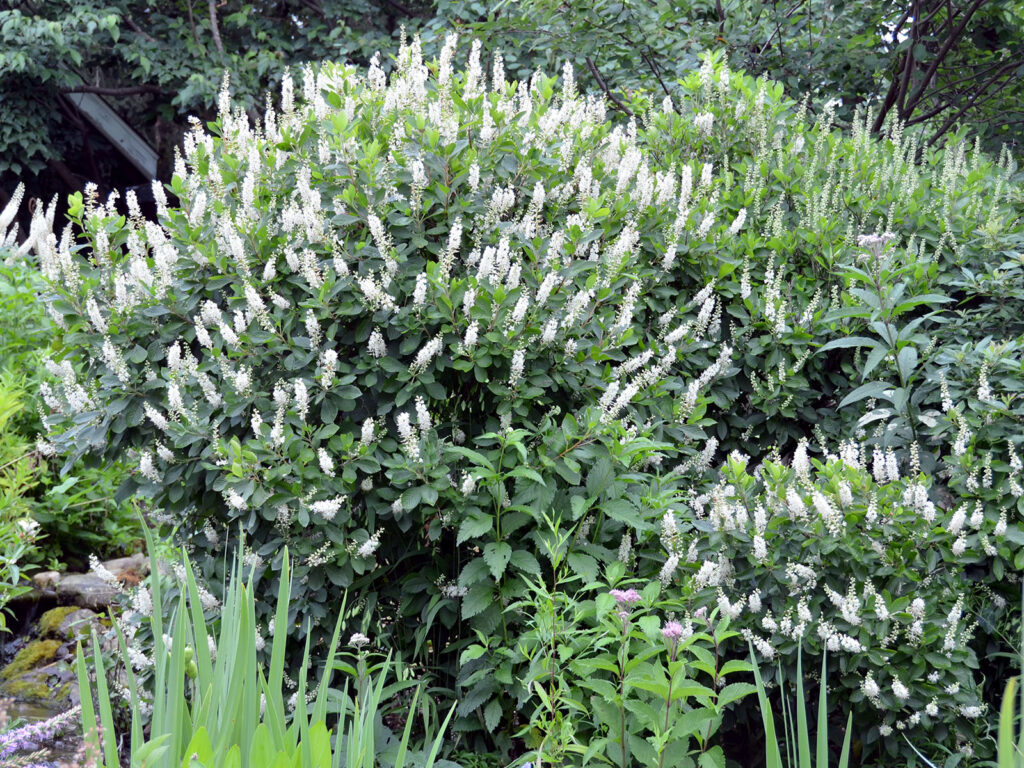
This is a group of clethra also known as summersweet or sweet pepperbush. The common name accurately conveys its honey-like fragrance that perfumes the yard in midsummer. It’s one of the few flowering shrubs at that time of year, so it’s especially welcome.
It’s easy to grow and — unlike many other native plants — easy to find, though mostly as cultivars. It gets to be about 6 feet tall. We severely pruned some of the plants closest to the pond since they were overhanging the stream. Fortunately, they seemed to respond well, and in a year or so, they grew in a very nice shape.
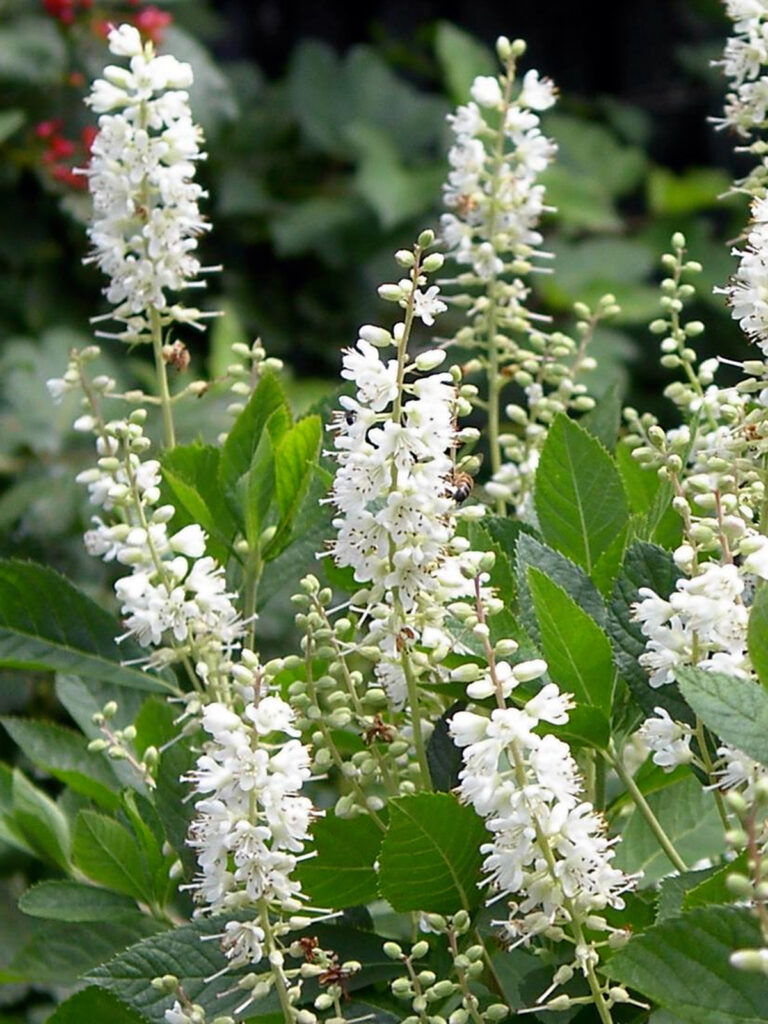
The flowers are very attractive, for humans and wildlife alike.
Wildlife: Flowers for bees, butterflies, hummingbirds; seed for birds
** SPECIAL VALUE TO NATIVE BEES **
** SPECIAL VALUE TO BUMBLE BEES **
- Learn more:
- Wildflower Center: Clethra
- GoBotany: Clethra alnifolia
